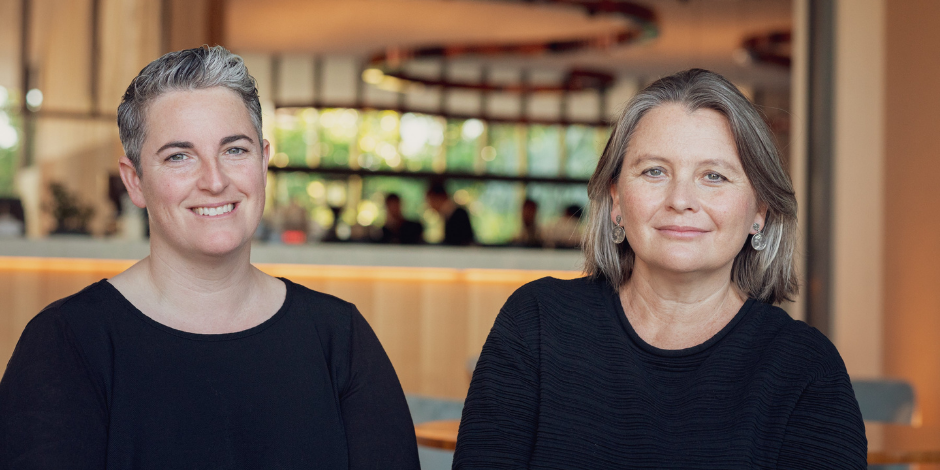Angel investing is tough, which is why it’s dominated by start-up founders who built successful companies, and have now come back around to invest. They know the red flags to look out for, and how to spot an opportunity.
But even if you have sufficient funds, and you’re a sophisticated investor, the learning curve can still be prohibitive.
This is where Flying Fox Ventures comes in. It’s run by two well-known VCs, Kylie Frazer and Rachael Neuman, who are bringing a cohort of investors along on their angel-investing journey. Teaching them the ropes along the way, while funding local startups.
They aim to raise in the vicinity of $5 million per year from each cohort, which is allocated to 10 new companies, and 15 re-investments, on average.

The pair both had their own shops, Eleanor Ventures and Working Theory Angels respectively. And they’ve now come together under the Flying Fox banner to help more of Australia’s wealthy investors become angels.
OnImpact spoke with Kylie Frazer about progress since they launched 6 months ago, how the investing model differs from VC, and how they integrate an impact lens.
Learn-by-Doing Investment Model
The typical model for a venture capital fund is to use a fund structure with GPs (General Partners) essentially running the show, they manage the administration and the deal flow, while LPs (Limited Partners) provide the capital, and some managerial and network input where appropriate.
Flying Fox employs a very different model, they don’t see themselves as VC’s, they’re simply investors.
They don’t muster a group of investors into a fund, instead, they convene a cohort of investors of differing levels of experience, and they usher them through the investment process, deal-by-deal.
“We bring in a group of investors as a cohort, and we run them through an education programme which let’s them really get under the hood of the due diligence process and test out their evaluation skills.”
It’s not until you have skin-in-the-game that the real learning begins.
“The thing with early stage investing is that it’s a very experiential learning process. You can read all the books you like, but until you’re ponying-up your own cash, and actually learning on the go, the lessons can’t be crystallized.” Kylie says.
“We’ve designed a really flexible approach. Some investors lean in and go deep on each deal. This can include reading the deal memo and background material we provide, asking Rachael and I questions, engaging directly with the founders or talking to their fellow cohort investors on our Notion platform. Others are hands-off, and take a passive approach, much like any other fund. The vast majority of our investors sit somewhere in the middle. They’ll lean-in when they’ve got the capacity to do so. When life gets in the way, they know that they can sit back and we’ll be there with our sleeves rolled up doing the hard work for them.”
An Annual Cohort
Kylie and Rachael welcome a new cohort of investors each year, with the first cohort raising $5 million. They’re second intake will happen around April this year
“We’re only licensed to work with sophisticated investors, alas. But, that doesn’t mean that we’re only accepting investors who can write a $250k check.” Kylie says.
“We know in early stage investing, that diversification is the number one predictor of returns. We’ve crunched the numbers and we know that the best way to achieve success is to have a large number of companies in your portfolio. Rachael and I are very good at telling people to reduce their cheque sizes, and spread it over more deals. We guarantee a minimum of 10 first checks in a cohort. Last year, we made 27 investments. Of that, we did 14 new companies, with the balance being follow-on rounds into previous companies.”
It’s a unique opportunity for investors that aren’t quite confident enough to angel-invest on their own, but who still have the capital and confidence to dive-in to the high-risk world of seed-stage investing.
“Angel investors are almost by definition busy, successful people and doing the work needed to build a diversified portfolio of 10-30 startups is pretty intense. We want to give investors a head start by leveraging the power of our full-time, experienced investment team.”
Through an Impact Lens
Kylie and Rachael don’t claim to be impact investors, but they’re acutely aware of the nuance of how we describe the nature of our investments, and how we assess the ‘impact’ a company will have on the world.
Investing at the seed-stage is climbing without ropes. There’s no track-record, and few foundations. It comes down to the experience of the investor to understand the future state and opportunities of the venture.
This necessitates a certain breadth of due-diligence, and metrics across impact and ESG are naturally going to be part of it.
“We’re always looking for founders that are solving problems for a large number of people.” Kylie says.
“One of my favourite impact investors told me a while ago that he considers all early-stage to be impact investing, because all early stage founders are solving a problem for someone. It’s just a matter of scale, and how you define meaningful impact. One of our early investments was into a LegalTech company called Josef, which automates workflows for lawyers. Nothing impact about it at all on the face – but as a lawyer who spent years in the grind, I can tell you that the benefits to the mental health of junior lawyers will be huge.”
The Flying Fox website lists the companies in the portfolio (noting this includes companies that pre-date the Flying Fox brand by 2-3 years) and many could easily fit into an impact fund.
“We do have a high proportion of startups that would fit in a more traditional ESG investing lens. This is not necessarily because we have an active ESG screen. It’s because we think that these companies are all too frequently undervalued.” Kylie says.
“We believe that companies solving problems in ways that benefit right across the ESG spectrum, are often better equipped to perform well. Sometimes other investors in the early stages don’t see that value as easily as we do, but more often, their rigid fund structures mean they aren’t as well positioned to capture that value as we are.”
The opportunities are all out there, it just depends what lens you’re looking through.
“Our model is flexible enough that we don’t need to make every investment look like traditional venture power law returns. We can look at every investment on its own merits and make a decision whether we think that investment will generate meaningful returns for our investors.” Kylie says.
Impact investments in the Flying Fox portfolio include Heaps Normal, Komodo, Loop+, Geora, Goterra, and Tiliter.
“Tiliter provides product recognition with AI and computer vision. It’s beachhead product is smart scales for supermarket checkouts, and on the face of it, it doesn’t look anything like an impact investment. It’s just got all the usual tech buzzwords ,but when you dig in, product recognition through computer vision reduces 1000s of kilos of plastic waste that’s used in fresh produce at supermarkets.” Kylie says.
“Think about when you have to put the plastic wrap around the cauliflower to put the barcode on it. These scales can automatically detect that it’s a cauliflower. You don’t need the barcode, you don’t need the plastic. This is the kind of incidental impact that we see as being consistently undervalued in traditional early stage investing.”

